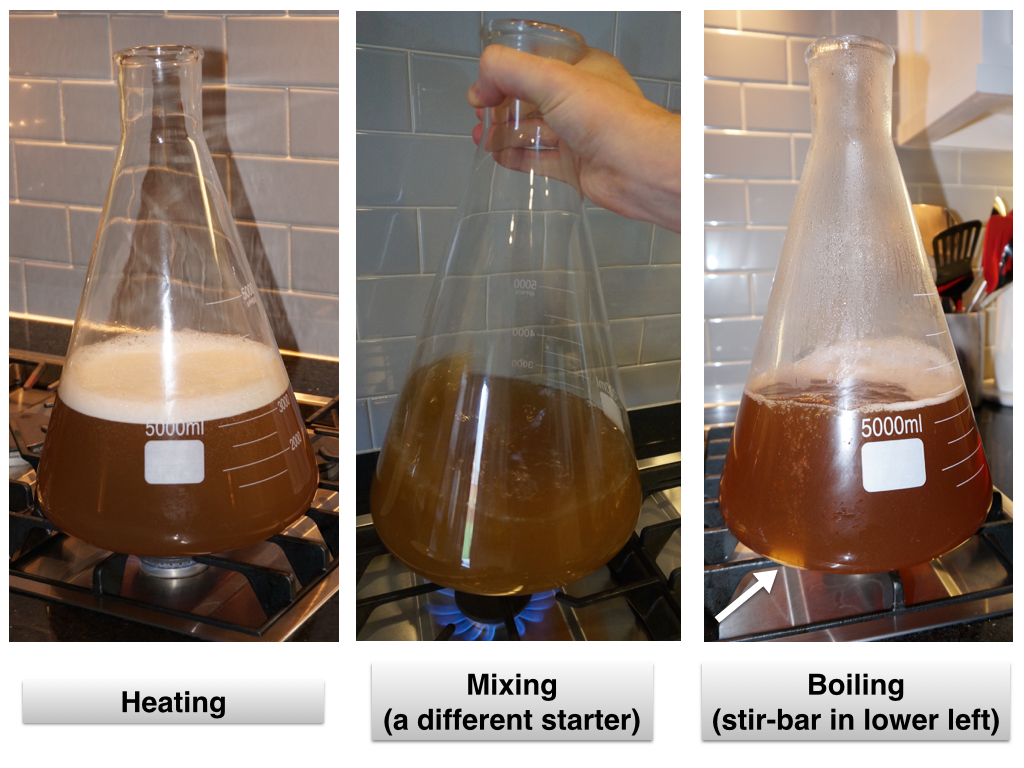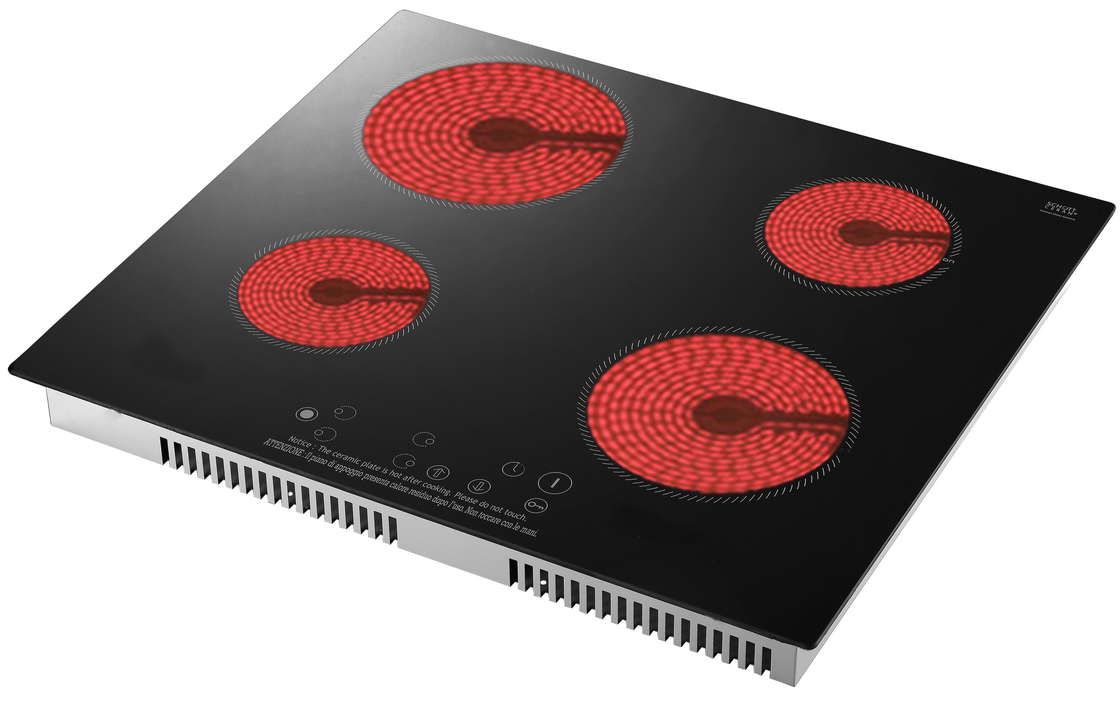I already have a 2L Erlenmeyer flask that I used a few times when doing 5 gal batches. After reading reviews I've seen a lot of people complain about cracking and breaking the flasks and causing a huge mess. What other options are there for doing massive starters for 10gal batches? Of course this is assuming you don't have a yeast bank of slurries already set up. Is there maybe a stainless option?
You are using an out of date browser. It may not display this or other websites correctly.
You should upgrade or use an alternative browser.
You should upgrade or use an alternative browser.
What vessel to use for 5L starters for 10gal batch?
- Thread starter cuda6pak
- Start date

Help Support Homebrew Talk - Beer, Wine, Mead, & Cider Brewing Discussion Forum:
This site may earn a commission from merchant affiliate
links, including eBay, Amazon, and others.
I already have a 2L Erlenmeyer flask that I used a few times when doing 5 gal batches. After reading reviews I've seen a lot of people complain about cracking and breaking the flasks and causing a huge mess. What other options are there for doing massive starters for 10gal batches? Of course this is assuming you don't have a yeast bank of slurries already set up. Is there maybe a stainless option?
I have a whole army of 5 litre brown glass jugs. I've also got silicone bungs with airlocks to fit them all.
I broke a 2L Erlenmeyer trying to boil it on an electric stove. I have had ZERO problems doing so on a gas stove.
For 10 gallon batches, a 5L Erlenmeyer is ideal, especially if doing lagers or higher gravity beers. A 2L is often barely enough for a high gravity ale, and rarely enough for a lager.
For 10 gallon batches, a 5L Erlenmeyer is ideal, especially if doing lagers or higher gravity beers. A 2L is often barely enough for a high gravity ale, and rarely enough for a lager.
I have a whole army of 5 litre brown glass jugs. I've also got silicone bungs with airlocks to fit them all.
When making a starter you do not want to use an airlock. The object is to promote reproduction of yeast cells. They require oxygen to do so at optimum levels. An open cell foam plug or just covering with a piece of sanitized foil is best.
You can easily make a starter large enough for 10 gallon batches in a 2 liter flask. Do a stepped starter. http://www.yeastcalc.co/yeast-pitch-rate-and-starter-calculator
I like to boil my wort in a pan, cool then pour it into the flask. This avoids boil overs that can be volcanic out of the narrow mouth. This also lessens thermal shock on the glass.
When making a starter you do not want to use an airlock. The object is to promote reproduction of yeast cells. They require oxygen to do so at optimum levels. An open cell foam plug or just covering with a piece of sanitized foil is best.
You can easily make a starter large enough for 10 gallon batches in a 2 liter flask. Do a stepped starter. http://www.yeastcalc.co/yeast-pitch-rate-and-starter-calculator
I like to boil my wort in a pan, cool then pour it into the flask. This avoids boil overs that can be volcanic out of the narrow mouth. This also lessens thermal shock on the glass.
A friend of mine actually had the best idea, take a bung, drill a hole sized for an aquarium air pump's tubing, and then pump air in through hole with an airlock in the main hole. Keeps fresh air in the starter to allow maximum oxygen uptake (http://braukaiser.com/blog/blog/2013/03/19/access-to-air-and-its-effect-on-yeast-growth-in-starters/ maximum growth by injecting air rather than foil/foam covering), but the airlock keeps the pressure manageable, but it also keeps out the fruit flies, which was something he noticed, and I've now noticed, while injecting air using a foam stopper. Just enough room for the flies to get in.
When making a starter you do not want to use an airlock. The object is to promote reproduction of yeast cells. They require oxygen to do so at optimum levels. An open cell foam plug or just covering with a piece of sanitized foil is best.
Yada yada yada. I regularly make a 20 litre starter for apfelwein - ferment 20 litres of apple juice for 3 days then split it up and get 4 big batches going all at the same time.
Covering something with a piece of foil certainly promotes oxygen circulation, no? I do a lot of remodeling, drilling holes in ceilings and so on. My goal is to prevent stuff from getting into the vessel.
But the reason I have airlocks and bungs for all those small jugs is that I secondary wine in them in order to free up my large fermenters. Pretty convenient to just carry a 5 litre jug of wine out to the table in the backyard when having a party.
I broke a 2L Erlenmeyer trying to boil it on an electric stove. I have had ZERO problems doing so on a gas stove.
For 10 gallon batches, a 5L Erlenmeyer is ideal, especially if doing lagers or higher gravity beers. A 2L is often barely enough for a high gravity ale, and rarely enough for a lager.
Yep, I have a 5 litre erlenmeyer - it's great.
Borosilicate is designed to be heated with flame or liquid, not electric.
Yep, I have a 5 litre erlenmeyer - it's great.
Borosilicate is designed to be heated with flame or liquid, not electric.
Yep, saw some stuff on how to "buffer" the heat from an electric stove heating element, still broke the bloody flask. Fortunately it broke before the wort got too hot, so it was a mess but not a dangerous mess.
Never try to directly heat a flask on an electric stove. And even with a gas stove, the flask will be fine, but Fermcap-S is your friend.
I already have a 2L Erlenmeyer flask that I used a few times when doing 5 gal batches. After reading reviews I've seen a lot of people complain about cracking and breaking the flasks and causing a huge mess. What other options are there for doing massive starters for 10gal batches? Of course this is assuming you don't have a yeast bank of slurries already set up. Is there maybe a stainless option?
Get yourself a 5L borosilicate lab-grade flask. Ideal for making big starters for lagers, hybrids or big ales. Great for overbuilding starters too.
Heat on the stove. Direct flame
Cool in cold water
Borosilicate is designed to withstand direct flame and rapid cooling.

Never try to directly heat a flask on an electric stove. And even with a gas stove, the flask will be fine, but Fermcap-S is your friend.
I don't think I have even seen an electric simple-element stove in the past 15 years. Gas isn't really available here, either. Pretty much everybody either has ceramic or induction cooktops nowadays. Hell, I've even got a portable 1-plate induction cooktop that I use for cooking out in the yard or at the summer cabin.
But if I want to heat my flask, I need to get out my big propane burner ;-)
I already have a 2L Erlenmeyer flask that I used a few times when doing 5 gal batches. After reading reviews I've seen a lot of people complain about cracking and breaking the flasks and causing a huge mess. What other options are there for doing massive starters for 10gal batches? Of course this is assuming you don't have a yeast bank of slurries already set up. Is there maybe a stainless option?
The other option to making that massive starter is to make a normal size starter but set up the conditions in your wort so your normal size starter can propagate to the amount of yeast you need. Your wort will normally have everything necessary to propagate yeast except for oxygen so aerate your wort well. The downside to that is increased lag time but even that shouldn't be terribly long.
Unfortunately I have an electric glass stovetop so I can't boil in the flask itself and already sold my propane burner and tank and don't want to purchase again just for starters. Plus, I have heard from others of still cracking and breaking the flask even with using a slow direct flame.
Has anyone tried some sort of wide mouth stainless steel beaker or bain marie type pot? Only thing I'd worry about are the wide open mouth having a better chance of getting nasties in it
Has anyone tried some sort of wide mouth stainless steel beaker or bain marie type pot? Only thing I'd worry about are the wide open mouth having a better chance of getting nasties in it
flars
Well-Known Member
This is what I use for starters. A 1.1 gallon Rubbermaid storage container. Has a flat bottom for the stir bar.
https://www.homebrewtalk.com/photo/new-yeast-starter-container-61619.html
https://www.homebrewtalk.com/photo/new-yeast-starter-container-61619.html
beersk
Well-Known Member
- Joined
- Mar 22, 2013
- Messages
- 1,873
- Reaction score
- 1,081
Get one of these little guys: http://www.northernbrewer.com/shop/small-batch-big-beers-booster-pack
Unfortunately I have an electric glass stovetop so I can't boil in the flask itself and already sold my propane burner and tank and don't want to purchase again just for starters. Plus, I have heard from others of still cracking and breaking the flask even with using a slow direct flame.
Has anyone tried some sort of wide mouth stainless steel beaker or bain marie type pot? Only thing I'd worry about are the wide open mouth having a better chance of getting nasties in it
I have boiled directly on my glass top stove. The problem with electric is usually the old coil type where the glass is in direct contact with the coil. It heats the glass where the coil touches and is less where there is no contact. In looking at my glass tops stove the coil is away from the the flask so the temperature differences across the bottom of the flask will be less.
I just use a cooking pot. Boil then cover when the wort is still hot to sterilize the inside of the lid. I then cool the pot, sanitize a funnel, the flask and stirbar and pour in the wort. Add the yeast, cover with a piece of foil and put it on the stirplate. Good to go.
So my flask never gets heated any more. It is so much easier adding DME to a pot than into the flask.
Yada yada yada. I regularly make a 20 litre starter for apfelwein - ferment 20 litres of apple juice for 3 days then split it up and get 4 big batches going all at the same time.
Covering something with a piece of foil certainly promotes oxygen circulation, no? I do a lot of remodeling, drilling holes in ceilings and so on. My goal is to prevent stuff from getting into the vessel.
But the reason I have airlocks and bungs for all those small jugs is that I secondary wine in them in order to free up my large fermenters. Pretty convenient to just carry a 5 litre jug of wine out to the table in the backyard when having a party.
Why don't you move your starter vessels to another room???
Why don't you move your starter vessels to another room???
I am drilling in all rooms!
Similar threads
- Replies
- 2
- Views
- 880
- Replies
- 21
- Views
- 2K

